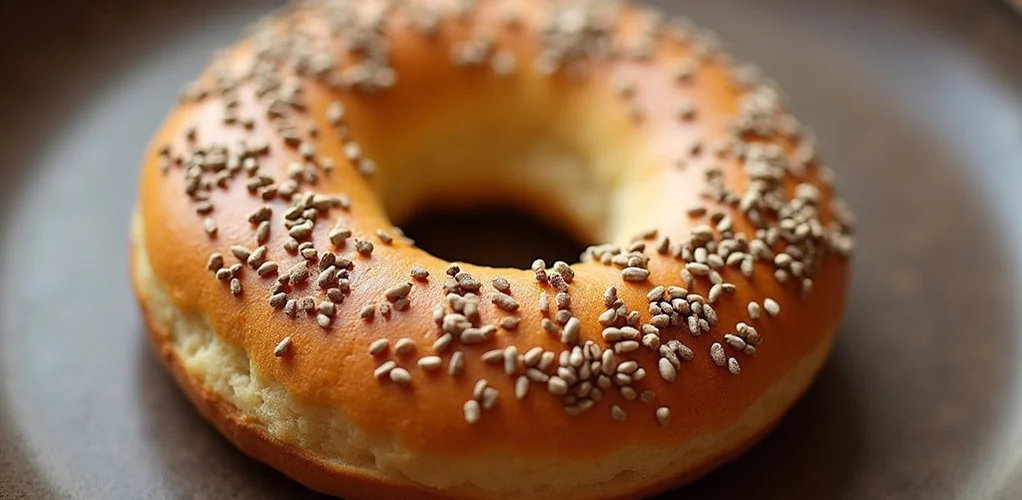
Low carb bagels can be made by swapping traditional flour with almond or coconut flour, combined with mozzarella cheese and cream cheese to create a chewy, authentic texture. The dough requires eggs as binding agents, while baking powder guarantees proper rise and structure. Each bagel contains approximately 5g net carbs and 21g protein, making them suitable for ketogenic diets. Understanding proper ingredient ratios and kneading techniques opens the path to perfecting these satisfying alternatives.
Key Takeaways
- Replace traditional wheat flour with almond flour or coconut flour to create a low-carb base with only 5g net carbs per bagel.
- Use shredded mozzarella and cream cheese to create fathead dough, which provides the chewy texture characteristic of traditional bagels.
- Add psyllium husk powder as a binding agent to improve texture and increase fiber content in your bagels.
- Incorporate eggs or ground flax seeds mixed with water to bind ingredients and provide structure to the dough.
- Knead dough thoroughly and let shaped bagels rest for 3-5 minutes before baking to achieve optimal chewiness.
Understanding Low Carb Bagel Basics
The foundation of low carb bagels lies in their innovative use of alternative flours and ingredients that maintain the beloved texture and taste of traditional bagels while drastically reducing carbohydrate content.
The key ingredients in a keto bagel recipe typically include almond flour and mozzarella cheese, which work together to create the signature chewy texture that bagel enthusiasts crave.
Almond flour and mozzarella cheese unite to create irresistibly chewy keto bagels that satisfy even the most discerning bread lover.
These versatile low carb bagels contain approximately 5g net carbs per serving and can be customized with various toppings, from Everything Bagel seasoning to sweet alternatives like cinnamon.
The dough's composition allows for effective meal prep, as the bagels can be frozen for up to six months without compromising quality.
This combination of convenience and nutritional benefits makes them an excellent choice for those following ketogenic or low-carbohydrate dietary plans.
By focusing on whole, unprocessed foods, keto bagels align with the health benefits of the ketogenic diet, promoting better nutrition and overall well-being.
Essential Ingredients for Keto-Friendly Bagels
Creating successful keto-friendly bagels starts with selecting the right flour alternatives, with almond flour and coconut flour serving as the primary low-carb foundations. The binding elements, including shredded mozzarella cheese and eggs, work together to achieve the characteristic chewy texture while maintaining structural integrity. Incorporating strategic mix-ins like psyllium husk powder and carefully measured baking powder can enhance both the nutritional profile and the overall texture of the final product. Additionally, using natural sweeteners like erythritol or stevia can provide the desired sweetness without adding extra carbs.
Core Flour Alternatives
Several flour alternatives serve as the foundation for creating delicious low-carb bagels, with superfine blanched almond flour standing as the most versatile option.
For those seeking different flour alternatives, coconut flour offers a viable substitute, though it requires significant recipe adjustments due to its moisture-absorbing properties.
Bakers can also explore nut-free options like sesame or sunflower seed flour while maintaining the desired low-carb profile and texture.
Key considerations when selecting flour alternatives:
- Moisture content affects the flour-to-liquid ratio, particularly when using coconut flour which requires only one-third of the standard amount.
- Baking powder adjustments may be necessary when switching between different flour types.
- Adding psyllium husk powder can enhance fluffiness, though it may impact the final carbohydrate count.
Crucial Binding Elements
While traditional bagels rely on gluten for their characteristic chewiness, keto-friendly bagels require specific binding elements to achieve a similar texture and structure.
In any low carb bagel recipe, shredded mozzarella cheese serves as a primary binding agent, creating the desired elasticity and chew that typically comes from wheat flour. Full-fat cream cheese works in tandem with almond flour to form a cohesive dough while adding necessary moisture and richness.
Eggs play a vital role in holding the ingredients together and providing stability to the final product. Baking powder, though not strictly a binding element, is essential for proper rise and texture, ensuring the bagels achieve the correct density and mouthfeel characteristic of traditional versions.
Flavor-Enhancing Mix-Ins
The art of perfecting low carb bagels extends beyond binding agents to the strategic incorporation of flavor-enhancing ingredients. Adding psyllium husk powder creates a fluffier texture while boosting fiber content, and flavor-enhancing mix-ins like garlic powder and dried herbs improve taste without significant carb impact.
Shredded cheese varieties introduce savory depth, while Everything Bagel seasoning adds complex flavor profiles.
Key considerations for flavor enhancement include:
- Complement base ingredients with salt or flavored cream cheese to create a well-rounded taste profile
- Experiment with sweet alternatives like cinnamon or sugar-free dried fruits for variety
- Layer textures using toppings such as sesame seeds or nutritional yeast to enrich the overall eating experience
Choosing the Right Flour Alternatives
When selecting flour alternatives for low carb bagels, almond flour stands as the leading choice due to its fine texture and minimal net carb content of 3.4g per bagel. Coconut flour presents another viable option, though it requires careful measurement adjustments and produces distinct textural results compared to almond-based recipes. For those seeking specific dietary accommodations, alternative combinations like sesame and sunflower seed flours can effectively replicate the consistency of traditional bagels while maintaining ketogenic requirements. When choosing sweeteners for your bagels, consider options with a low glycemic index to ensure they align with ketogenic standards and maintain stable blood sugar levels.
Popular Keto Flour Options
Selecting appropriate flour alternatives stands at the core of creating successful low-carb bagels, with several keto-friendly options offering distinct advantages for home bakers. Almond flour serves as a primary choice in keto bagel recipes, providing excellent texture while maintaining low carbohydrate content. When combined with psyllium husk powder, these alternatives create a dough that closely mimics traditional bagels.
- Coconut flour requires precise measurements due to its high absorption rate, using approximately one-third the amount compared to almond flour.
- Nut-free alternatives like sesame or sunflower seed flour maintain similar low-carb properties while accommodating allergies.
- Liquid ratios must be adjusted based on the chosen flour, as absorption rates vary considerably between options.
Almond Vs Coconut Flour
Understanding the distinctions between almond and coconut flour proves essential for crafting successful low-carb bagels, as each alternative brings unique properties to the baking process.
For those following a ketogenic diet, almond flour offers higher fat content and lower carbohydrates, with 14g of fat and 6g of carbs per quarter cup. While both options are gluten-free, they require different approaches to achieve ideal dough consistency.
Coconut flour's highly absorbent nature demands increased liquid ingredients and uses only one-third the amount compared to almond flour in recipes. However, it creates a lighter, more cake-like texture.
Almond flour produces denser results with richer flavor profiles, making it particularly suitable for bagels that require substantial structure and authentic mouthfeel.
Texture and Taste Impact
The right flour alternative fundamentally shapes both the texture and taste profile of low-carb bagels, making this choice essential for achieving desired results.
Using superfine almond flour creates a satisfyingly chewy texture while preventing grittiness that can detract from the authentic bagel experience. Adding psyllium husk powder enhances fluffiness and improves overall texture, regardless of which flour alternatives are selected.
- Almond flour produces denser, chewier bagels that closely mirror traditional wheat-based varieties.
- Coconut flour yields lighter, airier results but requires precise liquid ratio adjustments.
- Alternative options like sesame or sunflower seed flour provide nut-free solutions while maintaining desirable texture characteristics.
The Role of Cheese in Low Carb Bagel Making
Cheese serves as a cornerstone ingredient in low carb bagel making, fundamentally transforming how these alternatives to traditional wheat-based bagels are prepared and enjoyed. The combination of shredded low-moisture part-skim mozzarella and full-fat cream cheese creates a dough consistency that closely mimics conventional bagels, providing the characteristic chewiness and elasticity that bread lovers seek. When melted and incorporated with other ingredients, these cheeses work together to bind the dough while maintaining a low net carbs count of approximately 5g per bagel. The mozzarella's stretchy properties contribute to the bagel's structure, while cream cheese adds moisture and richness to the final product. This cheese-based foundation guarantees that low carb bagels maintain their shape and texture through the baking process. For those following a keto diet, using keto-friendly oils such as olive oil or avocado oil can enhance the nutritional quality and flavor of the bagels, making them a more satisfying and health-conscious choice.
Binding Agents and Egg Substitutes
When selecting binding agents for low carb bagels, both flax seeds and chia seeds serve as effective options, with flax seeds offering a nuttier flavor profile while chia seeds contribute a more neutral taste.
Ground psyllium husk powder stands out as a superior binding agent due to its ability to create a more authentic bagel texture and its high fiber content, which helps maintain the bagel's structure during baking.
The combination of ground psyllium husk with either flax or chia seeds can provide excellent results, creating a chewy texture that closely mimics traditional wheat-based bagels.
Flax Vs Chia Seeds
Understanding the role of binding agents in low carb bagels can greatly impact the final texture and structure of these healthier alternatives.
Both flax seeds and chia seeds serve as excellent egg substitutes in low carb recipes, creating a cohesive dough through their gel-forming properties when mixed with water. These gluten-free alternatives offer distinct advantages in texture and nutritional content.
- Water-to-seed ratio: Use 1 tablespoon of ground seeds with 2.5 tablespoons of water to replace one egg
- Texture variations: Flax creates a smoother gel, while chia seeds can provide subtle crunch when used whole
- Nutritional benefits: Chia seeds contain higher levels of fiber and omega-3 fatty acids compared to flax seeds, enhancing the overall health benefits of low carb bagels
Ground Psyllium Husk Benefits
Ground psyllium husk stands as a cornerstone ingredient in low-carb bagel making, offering exceptional binding properties that rival traditional gluten-based ingredients. When incorporated into low-carb recipes, this natural soluble fiber creates a cohesive dough structure while providing a chewy texture similar to conventional bread products.
| Property | Function | Benefit |
|---|---|---|
| Binding Agent | Creates dough elasticity | Improves texture and rise |
| Moisture Control | Absorbs and swells | Maintains proper consistency |
| Egg Substitute | 1 tbsp + 3 tbsp water | Replaces one egg |
As a crucial component in gluten-free baking, ground psyllium husk enhances both the structural integrity and nutritional profile of bagels. Its ability to support digestive health through added fiber makes it an invaluable ingredient for health-conscious bakers seeking authentic bagel characteristics in their low-carb creations.
Mastering the Fathead Dough Technique
The successful creation of low-carb bagels hinges on mastering Fathead dough, a revolutionary mixture that transforms simple ingredients into a remarkably bread-like consistency.
The process begins with melting shredded mozzarella and cream cheese together until smooth, then combining with almond flour, baking powder, and egg to form a pliable dough.
- Heat mozzarella and cream cheese until completely melted and smooth
- Incorporate almond flour and baking powder evenly throughout the mixture
- Shape the dough into uniform logs with properly sized holes for authentic bagel appearance
For ideal results, bakers can experiment with variations using coconut flour or adding psyllium husk powder to enhance texture. The key lies in achieving the right consistency through proper melting and mixing techniques, ensuring each ingredient contributes to the final product's chewy, bread-like texture. Almond flour serves as a low-carb alternative to wheat flour, adding flavor and texture to baked goods.
Shaping and Forming Perfect Bagels
Successfully crafting perfectly shaped low-carb bagels requires methodical attention to detail and proper hand techniques during the forming process.
After dividing the dough into equal portions, each section should be rolled into a 6.5-inch log before joining the ends to create the classic bagel shape. When working with sticky dough, using oiled hands helps maintain a smooth surface throughout the shaping process.
For perfectly uniform bagels, roll each dough portion into a 6.5-inch log and join ends with lightly oiled hands.
To guarantee peak results, bakers should focus on creating a center hole measuring 1-2 inches, which prevents closure during baking.
Once formed, each bagel can be gently stretched to achieve uniform thickness and size. When transferring the shaped bagels to the baking sheet, proper spacing is essential to accommodate expansion during the baking process.
Baking Tips for Optimal Texture
Achieving the perfect texture in low-carb bagels requires careful attention to both kneading techniques and baking temperatures, with proper kneading being vital for developing the characteristic chewy texture. Temperature control during baking plays a significant role, as maintaining consistent heat guarantees even cooking and proper rise throughout the process. Following the baking phase, allowing the bagels to cool completely on a wire rack prevents condensation from making them soggy, while preserving their desired texture and structure. Incorporating batch cooking techniques allows for efficient preparation of multiple bagels, ensuring that you have enough for the week without compromising on taste or quality.
Kneading for Perfect Chewiness
Creating perfectly chewy low carb bagels hinges on mastering the kneading process, which develops an essential gluten-like structure despite the absence of traditional wheat flour.
Using a food processor or stand mixer guarantees thorough and consistent dough development, while maintaining room temperature ingredients promotes ideal texture. When the dough becomes sticky, lightly oiled hands can facilitate shaping without compromising the desired outcome.
- Allow shaped bagels to rest for 3-5 minutes before baking to achieve maximum chewiness
- Process dough until it forms a cohesive mass that pulls away from the mixer bowl sides
- Monitor dough temperature throughout preparation, as cold ingredients can inhibit proper texture development
A brief resting period after shaping helps relax the dough structure, ultimately contributing to the authentic, chewy texture that distinguishes well-made low carb bagels.
Temperature Control While Baking
While mastering low carb bagel texture depends on several factors, proper temperature control during baking stands as the cornerstone of success.
Precise temperature control begins with preheating the oven to around 350°F (180°C), verified using an oven thermometer for accuracy. This essential step guarantees even baking throughout the bagels.
During the baking process, resist the urge to frequently open the baking door, as temperature fluctuations can compromise the bagels' rise and texture.
If the tops begin browning too quickly while the centers remain undercooked, covering them with foil allows for thorough cooking without burning.
Once baked, transfer the bagels to a wire rack to cool completely, preventing moisture from becoming trapped and maintaining their desired texture.
Proper Cooling Methods
Once the low carb bagels emerge golden-brown from the oven, proper cooling becomes essential for achieving the perfect texture.
Allowing them to rest on a wire rack for at least 10 minutes helps maintain a crispy crust while preventing unwanted condensation. For best results, resist the temptation to slice the bagels until they've cooled completely, as this ensures proper structure and prevents a gummy consistency.
- Place cooled bagels in an airtight container or wrap individually to preserve texture
- When reheating, opt for toasting rather than microwaving to restore the signature chewy texture
- Store at room temperature if consuming within 2-3 days, or freeze for longer storage
Following these cooling and storage methods guarantees that your low carb bagels maintain their desired texture and taste for multiple servings.
Popular Seasoning and Topping Options
Seasoning and topping options transform low carb bagels from basic bread alternatives into flavorful, customized creations that rival their traditional counterparts. Everything Bagel seasoning, garlic powder, and onion powder serve as popular choices for savory almond flour bagels, while sweet variations incorporate cinnamon and sugar-free dried fruits. An egg wash applied before baking creates an appealing finish and helps toppings like shredded cheese, nuts, or fresh herbs adhere properly to the surface. For enhanced flavor profiles, bakers can incorporate rosemary or thyme directly into the dough or sprinkle them on top. Caramelized onions add depth and texture, while sesame seeds provide a classic touch. These versatile additions allow home bakers to experiment with different combinations while maintaining the bagels' low carb integrity. A variety of keto salad recipes provides fresh and flavorful meal options while adhering to keto diet principles.
Troubleshooting Common Texture Issues
Several common texture issues can arise when making low carb bagels, but understanding their root causes enables bakers to achieve ideal results.
Making perfect low carb bagels requires knowing what causes texture problems and how to solve them during baking.
When dough forms appear flat or dense, fresh baking powder is necessary for proper rise and texture. A food processor can incorporate essential air bubbles, though care should be taken not to over-process.
When the mixture becomes too sticky to handle, oiling hands and brief chilling can improve workability, while proper moisture balance is critical when using different flour types.
- Monitor internal temperature to prevent bagels that are raw inside while browning externally
- Adjust liquid ratios based on flour absorption rates, especially with coconut flour
- Test baking powder freshness before beginning to verify proper rise and texture
Storage and Reheating Methods
Proper storage and reheating techniques play an essential role in maintaining the quality of low carb bagels beyond their initial baking. For ideal freshness, refrigerate bagels in an airtight container for up to one week, or freeze them individually wrapped for up to six months.
| Storage Method | Duration | Reheating Tips |
|---|---|---|
| Refrigerator | 1 week | Toast or air fry |
| Freezer | 6 months | Thaw overnight |
| Room Temperature | Not recommended | N/A |
When ready to enjoy frozen bagels, allow them to thaw in the refrigerator overnight. For immediate consumption, microwave for 10-15 seconds before toasting. While microwaving can make bagels softer, wrapping them in a damp paper towel helps maintain moisture. For the best texture, reheat bagels in a toaster or air fryer to restore their crispy exterior and chewy interior.
Nutritional Benefits and Macros
Delving into the nutritional profile of low carb bagels reveals significant advantages for those monitoring their carbohydrate intake. With approximately 5g net carbs per serving, these bagels fit perfectly into a keto lifestyle while providing essential nutrients.
The combination of almond flour and dairy-based ingredients creates a balanced mix of healthy fats and protein, supporting sustained energy throughout the day.
- Each bagel delivers 21g of protein and 28g of fat, making it an excellent option for maintaining ketosis.
- The use of almond flour provides essential minerals and vitamins while keeping net carbs minimal.
- Additional fiber from ingredients like psyllium husk powder aids digestion and promotes satiety.
These macronutrient ratios align perfectly with ketogenic dietary requirements, offering a convenient way to enjoy traditional bread alternatives without compromising nutritional goals.
Protein should constitute 20-30% of daily caloric intake, ensuring that these low carb bagels not only support ketosis but also contribute to muscle maintenance and overall health.
Sweet and Savory Variation Ideas
While the basic low carb bagel recipe provides an excellent foundation, customizing the flavors through various sweet and savory additions transforms these healthy alternatives into gourmet treats. Sweet variation ideas include incorporating cinnamon and allulose for a cinnamon raisin flavor, or adding sugar-free dried cranberries for a fruity twist. For those preferring savory options, Everything Bagel seasoning, sesame seeds, or caramelized onions create delicious flavor profiles. Creating a cheese bagel by folding shredded cheddar or parmesan into the dough offers a rich, satisfying option. Those with nut allergies can replace almond flour with a blend of sesame and sunflower seed flours while maintaining the same texture and taste. These variations guarantee that low carb bagels remain versatile and appealing for different dietary preferences.
To complement your low carb bagels with a sweet treat, consider trying keto chocolate options from brands like Hu Chocolate or Lilys, which are low in carbs and free from added sugars.
Serving Suggestions and Pairings
Low carb bagels offer endless serving possibilities that enhance them from simple bread alternatives to satisfying meal components.
From classic cream cheese spread topped with smoked salmon and capers for breakfast to creative variations like avocado toast with sesame seeds, these versatile options provide nutritious and filling meals throughout the day.
- Transform bagels into mini pizzas by adding marinara sauce and cheese for a quick, satisfying dinner option.
- Create protein-rich lunch combinations using tuna salad and fresh lettuce.
- Make a traditional-style sandwich with peanut butter and sugar-free jelly for a convenient snack.
These serving suggestions demonstrate how low carb bagels can seamlessly replace conventional bread while maintaining familiar flavors and textures in everyday meals.
Making Ahead and Freezing Guidelines
Many busy home bakers appreciate the convenience of preparing low carb bagels in advance, making meal planning more efficient and stress-free. These make ahead bagels can be stored in an airtight container in the refrigerator for up to a week, or frozen for extended preservation of up to six months. To maintain peak freshness when freezing, individually wrap each bagel and label the packaging with the freezing date. Allow bagels to cool completely before storage to prevent moisture accumulation. When ready to enjoy frozen bagels, toasting is the recommended reheating method, as it preserves the desired texture better than microwaving. For added nutritional benefits, consider incorporating low-carb vegetables into your bagel recipes to boost fiber and nutrients. This simple approach to storage and reheating guarantees that low carb bagels remain fresh and delicious, ready for convenient enjoyment whenever needed.
Frequently Asked Questions
What Are the Two Ingredients in a Keto Bagel?
Keto bagels primarily rely on almond flour and mozzarella cheese as core ingredients, with almond flour serving as the low-carb base while mozzarella cheese creates the characteristic chewy texture essential for authentic results.
Can You Eat Bagels on a Low-Carb Diet?
Traditional bagels aren't recommended, but low-carb alternatives using almond flour and cheese offer viable options. These bagel recipes support meal prep and can include keto-friendly spreads and bagel toppings for nutritional comparisons.
Can You Make Bagels Without Flour?
Flour alternatives like almond flour, coconut flour, and fathead dough enable bagel creation without traditional flour. Various baking techniques and yeast substitutes maintain proper dough consistency while offering enhanced nutritional benefits and flavor options.
How to Form a Bagel Out of Dough?
Divide dough into equal portions, roll each into a rope, then connect ends to form circles. Pinch seams firmly, gently stretch center hole, and allow proper rising time before baking.
Conclusion
Low carb bagels offer a satisfying alternative for those following ketogenic or low-carb diets, proving that dietary restrictions need not mean sacrificing beloved breakfast foods. Through thoughtful ingredient substitutions and proper technique, home bakers can create chewy, flavorful bagels that rival their traditional counterparts. With proper storage methods and endless variation possibilities, these healthier bagels seamlessly integrate into a sustainable, carb-conscious lifestyle while delivering essential nutrients and authentic bagel satisfaction.

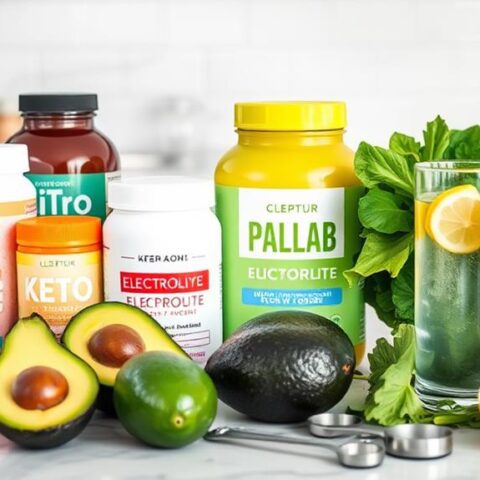
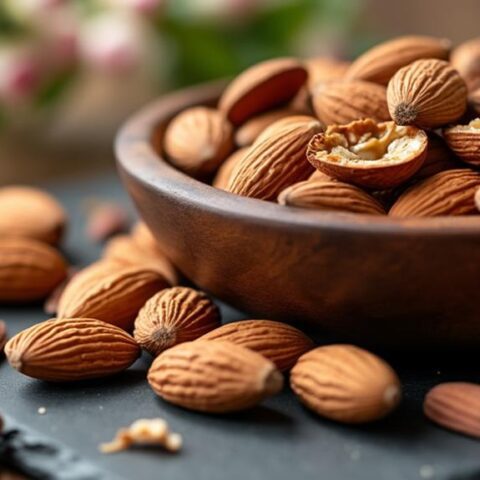
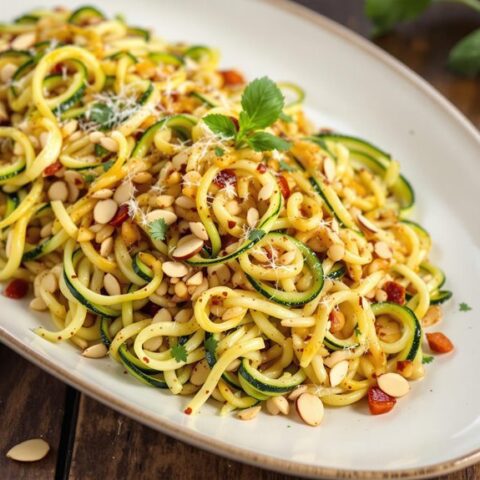
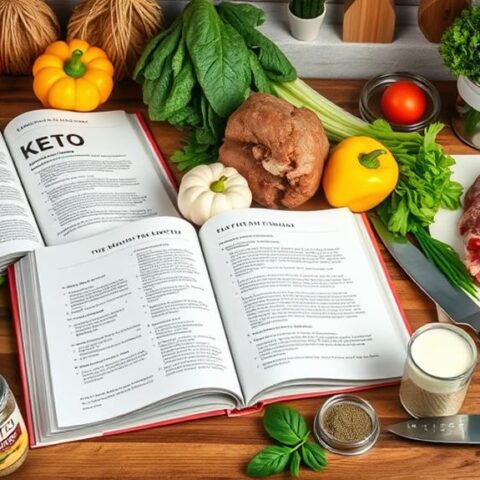



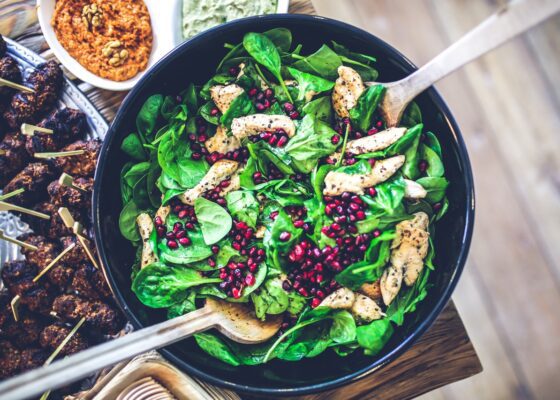

No Comments